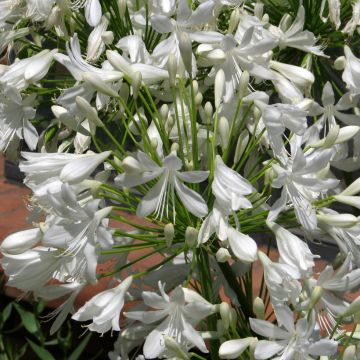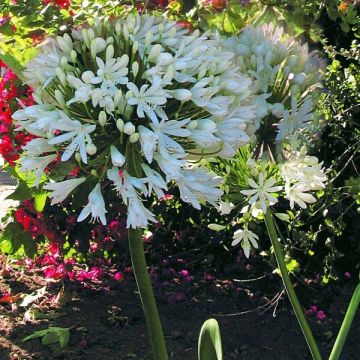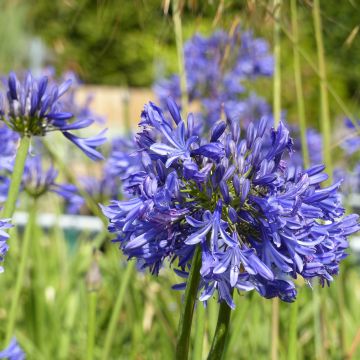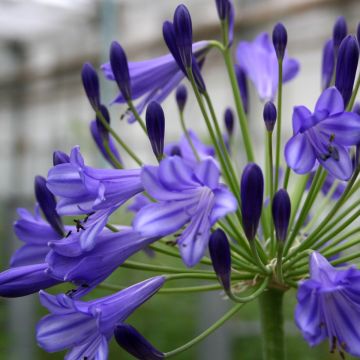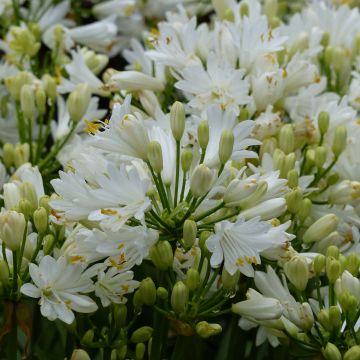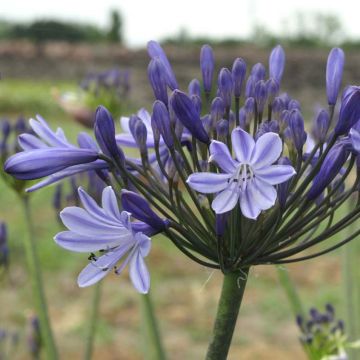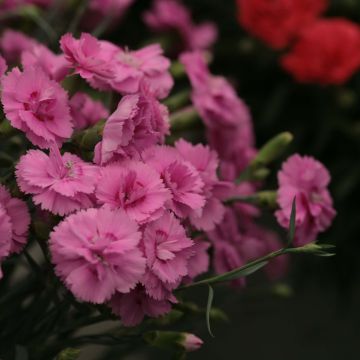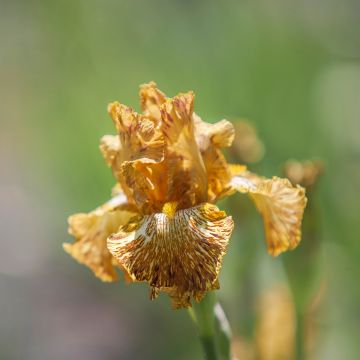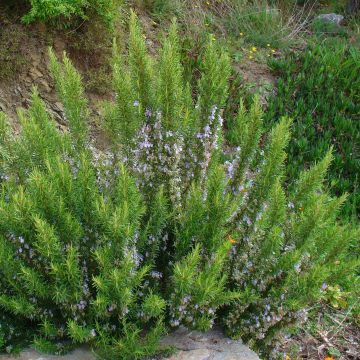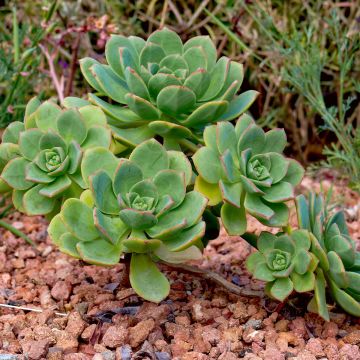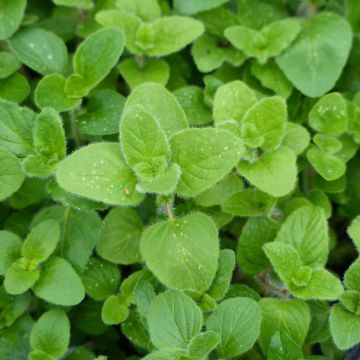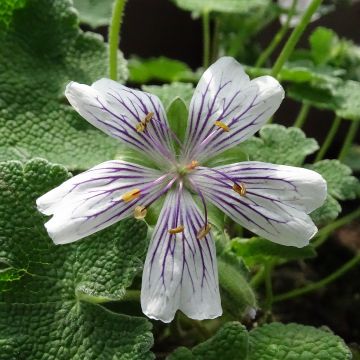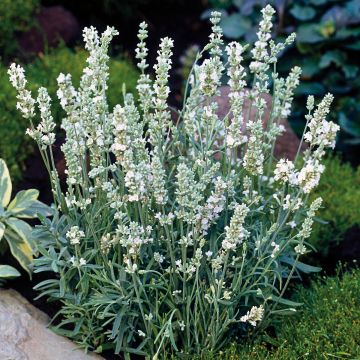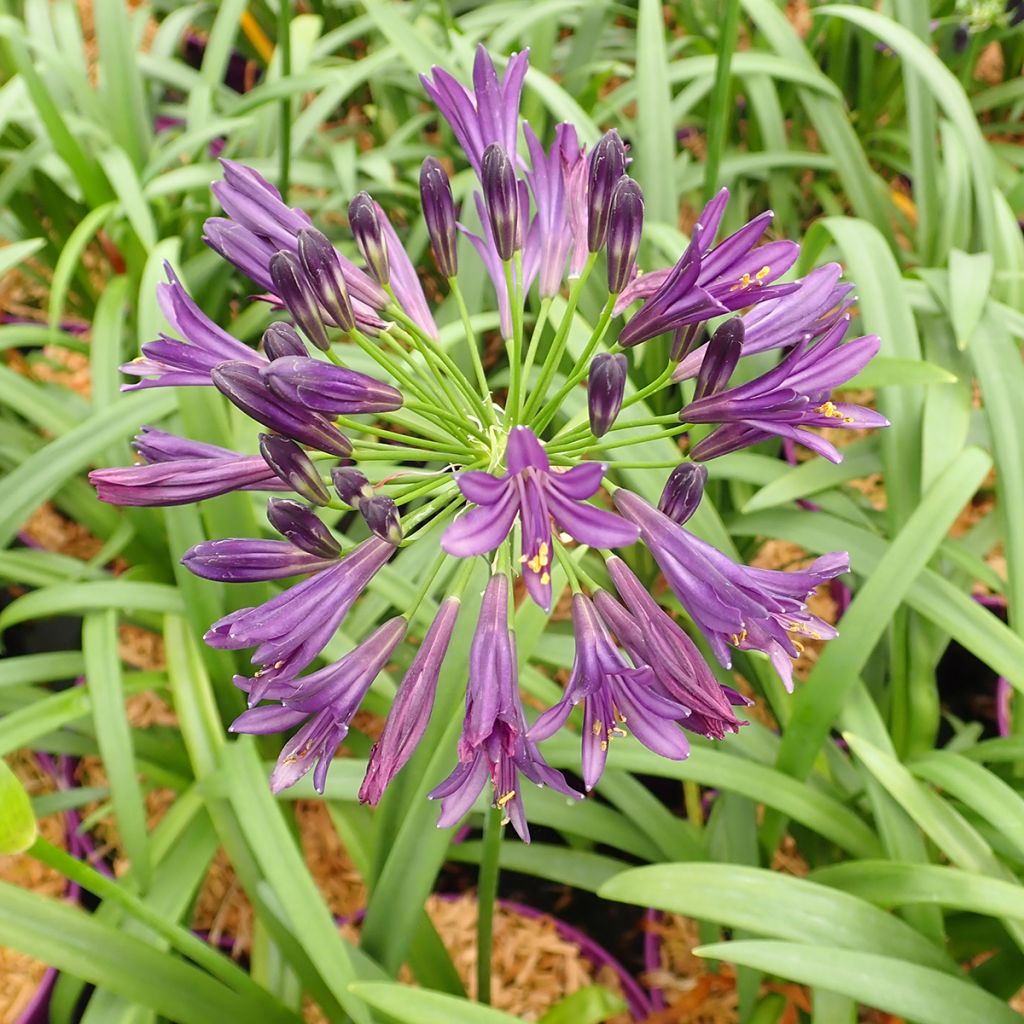

Agapanthus x africanus Pitchoune Violet - African Lily
Agapanthus x africanus Pitchoune Violet - African Lily
Agapanthus x africanus Pitchoune Violet
African Lily, Lily of the Nile
This item cannot be shipped to the selected country
Delivery charge from €5.90
More information
Schedule delivery date,
and select date in basket
This plant carries a 12 months recovery warranty
More information
We guarantee the quality of our plants for a full growing cycle, and will replace at our expense any plant that fails to recover under normal climatic and planting conditions.
From €5.90 for pickup delivery and €6.90 for home delivery
Express home delivery from €8.90.
Does this plant fit my garden?
Set up your Plantfit profile →
Description
The agapanthus PITCHOUNE Violet 'MILL04' stands out for its unique colour, its floriferousness and its compact habit. This deciduous bulbous plant adorns itself in June-July with numerous umbels of a very bright dark violet. They are carried by strong stems above the clump of ribbon-like leaves. This perennial prefers full sun, but also flowers in partial shade. Plant it in a rich and well-drained soil, in a pot, in a border or a bed.
This new variety 'Pitchoune Violet' was created in 2020 by an American breeder, Luen Miller, and is protected by a European Plant Breeders' Rights (PBR) certificate. It belongs to the Liliaceae family and comes from the cross-breeding of different species from South Africa, including Agapanthus africanus.
The agapanthus 'Pitchoune Violet' develops, like all agapanthus, from a short rhizome with fleshy roots. It forms a dwarf clump that will not exceed 50 cm in all directions. It is composed of elongated, green leaves that usually disappear in winter. From the early summer, umbels of 10 to 15 cm in diameter appear at the top of short and robust stems. The flowers are a unique dark violet among agapanthus varieties. It is a floriferous and hardy variety, down to -15°C in well-drained soil.
Place your agapanthus 'Pitchoune Violet' at the forefront of your beds or in a border. It is perfect due to its small size. Combine it with other varieties from the Pitchoune range, such as Pitchoune White with white flowers or Pitchoune Blue with blue flowers. The Golden Drop agapanthus with its variegated foliage can bring some light to your composition. In regions with harsher climates, prefer planting it in a large container on a terrace or balcony. This way, you can easily protect it or even store it in a frost-free area during winter. The flowers are perfect for creating lovely bouquets.
Report an error about the product description
Flowering
Foliage
Plant habit
Botanical data
Agapanthus
x africanus
Pitchoune Violet
Alliaceae - Liliaceae
African Lily, Lily of the Nile
Cultivar or hybrid
Other Agapanthus - Lily of the Nile
Planting and care
The 'Pitchoune Violet' Agapanthus prefers full sun but also flowers in partial shade. Place it in a rich, well-drained soil. Its hardiness is better if the soil does not retain too much water. It tolerates limestone well and summer drought. However, its flowering will be even more vibrant if you have the possibility to water it regularly during the growth period (twice a week). Mulch its base with a thick layer of dead leaves as winter approaches. In a pot, protect your plant with a winter cover or bring it indoors away from severe frost, in an unheated room. Plant it at a depth of 10 cm in a leaf soil mixed with compost. Once established in the ground, avoid disturbing your agapanthus. Cut the faded stems after flowering.
Planting period
Intended location
Care
This item has not been reviewed yet - be the first to leave a review about it.
Mediterranean perennials
Haven't found what you were looking for?
Hardiness is the lowest winter temperature a plant can endure without suffering serious damage or even dying. However, hardiness is affected by location (a sheltered area, such as a patio), protection (winter cover) and soil type (hardiness is improved by well-drained soil).

Photo Sharing Terms & Conditions
In order to encourage gardeners to interact and share their experiences, Promesse de fleurs offers various media enabling content to be uploaded onto its Site - in particular via the ‘Photo sharing’ module.
The User agrees to refrain from:
- Posting any content that is illegal, prejudicial, insulting, racist, inciteful to hatred, revisionist, contrary to public decency, that infringes on privacy or on the privacy rights of third parties, in particular the publicity rights of persons and goods, intellectual property rights, or the right to privacy.
- Submitting content on behalf of a third party;
- Impersonate the identity of a third party and/or publish any personal information about a third party;
In general, the User undertakes to refrain from any unethical behaviour.
All Content (in particular text, comments, files, images, photos, videos, creative works, etc.), which may be subject to property or intellectual property rights, image or other private rights, shall remain the property of the User, subject to the limited rights granted by the terms of the licence granted by Promesse de fleurs as stated below. Users are at liberty to publish or not to publish such Content on the Site, notably via the ‘Photo Sharing’ facility, and accept that this Content shall be made public and freely accessible, notably on the Internet.
Users further acknowledge, undertake to have ,and guarantee that they hold all necessary rights and permissions to publish such material on the Site, in particular with regard to the legislation in force pertaining to any privacy, property, intellectual property, image, or contractual rights, or rights of any other nature. By publishing such Content on the Site, Users acknowledge accepting full liability as publishers of the Content within the meaning of the law, and grant Promesse de fleurs, free of charge, an inclusive, worldwide licence for the said Content for the entire duration of its publication, including all reproduction, representation, up/downloading, displaying, performing, transmission, and storage rights.
Users also grant permission for their name to be linked to the Content and accept that this link may not always be made available.
By engaging in posting material, Users consent to their Content becoming automatically accessible on the Internet, in particular on other sites and/or blogs and/or web pages of the Promesse de fleurs site, including in particular social pages and the Promesse de fleurs catalogue.
Users may secure the removal of entrusted content free of charge by issuing a simple request via our contact form.
The flowering period indicated on our website applies to countries and regions located in USDA zone 8 (France, the United Kingdom, Ireland, the Netherlands, etc.)
It will vary according to where you live:
- In zones 9 to 10 (Italy, Spain, Greece, etc.), flowering will occur about 2 to 4 weeks earlier.
- In zones 6 to 7 (Germany, Poland, Slovenia, and lower mountainous regions), flowering will be delayed by 2 to 3 weeks.
- In zone 5 (Central Europe, Scandinavia), blooming will be delayed by 3 to 5 weeks.
In temperate climates, pruning of spring-flowering shrubs (forsythia, spireas, etc.) should be done just after flowering.
Pruning of summer-flowering shrubs (Indian Lilac, Perovskia, etc.) can be done in winter or spring.
In cold regions as well as with frost-sensitive plants, avoid pruning too early when severe frosts may still occur.
The planting period indicated on our website applies to countries and regions located in USDA zone 8 (France, United Kingdom, Ireland, Netherlands).
It will vary according to where you live:
- In Mediterranean zones (Marseille, Madrid, Milan, etc.), autumn and winter are the best planting periods.
- In continental zones (Strasbourg, Munich, Vienna, etc.), delay planting by 2 to 3 weeks in spring and bring it forward by 2 to 4 weeks in autumn.
- In mountainous regions (the Alps, Pyrenees, Carpathians, etc.), it is best to plant in late spring (May-June) or late summer (August-September).
The harvesting period indicated on our website applies to countries and regions in USDA zone 8 (France, England, Ireland, the Netherlands).
In colder areas (Scandinavia, Poland, Austria...) fruit and vegetable harvests are likely to be delayed by 3-4 weeks.
In warmer areas (Italy, Spain, Greece, etc.), harvesting will probably take place earlier, depending on weather conditions.
The sowing periods indicated on our website apply to countries and regions within USDA Zone 8 (France, UK, Ireland, Netherlands).
In colder areas (Scandinavia, Poland, Austria...), delay any outdoor sowing by 3-4 weeks, or sow under glass.
In warmer climes (Italy, Spain, Greece, etc.), bring outdoor sowing forward by a few weeks.



































